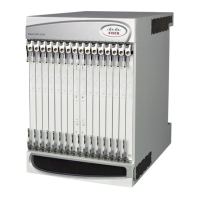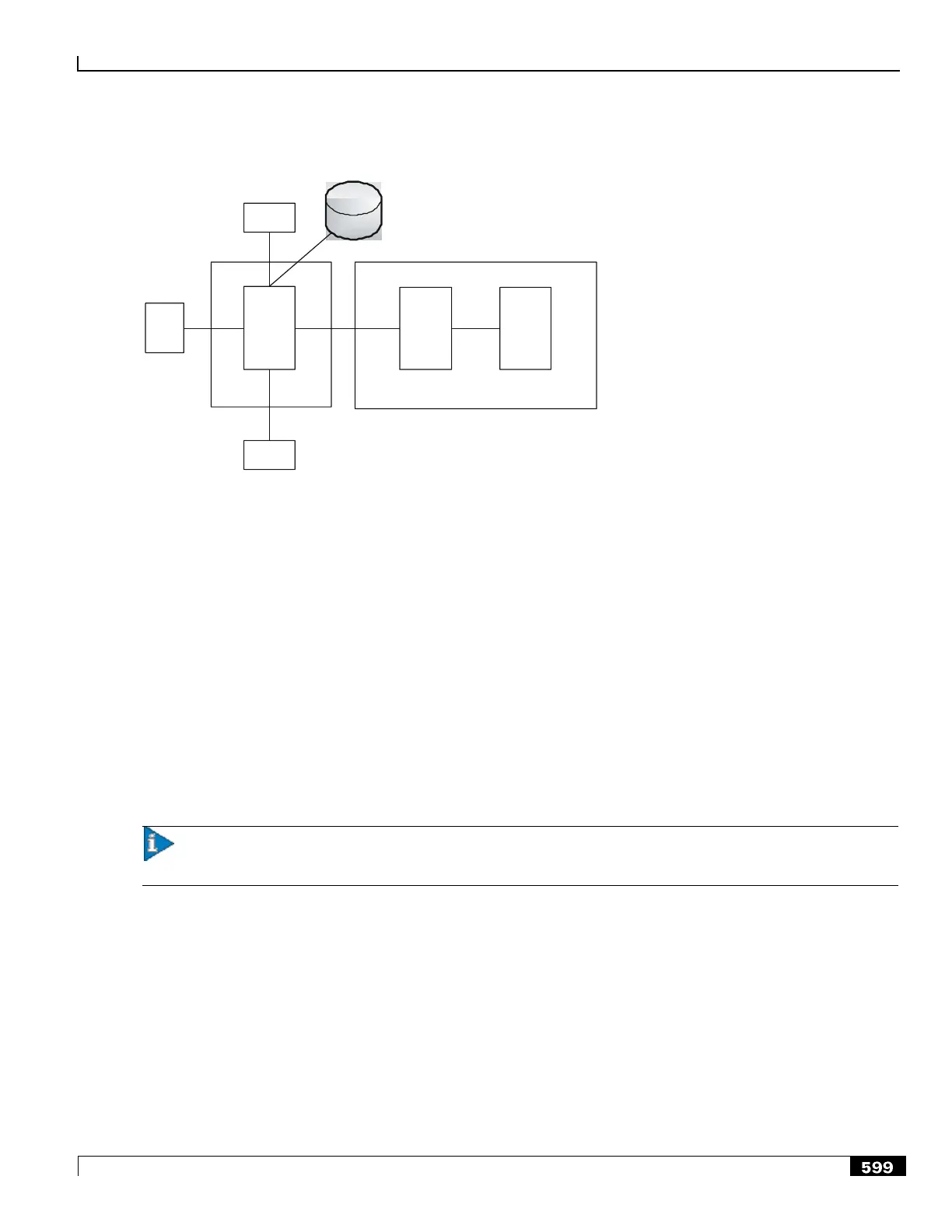Session Control Manager Overview
Features and Functionality - Licensed Enhanced Feature Support ▀
Cisco ASR 5000 Series Product Overview ▄
Figure 150. Interworking Between IPv4 UE and IPv6 IMS Core Network
IPv
4
UE
P
-
CSCF
IPv
4
/
IPv
6
I
-
CSCF
IPv
6
S
-
CSCF
IPv6
Dual Stack
IPv
6
IMS Core network
CCF
PCRF
Rf
IPv4/IPv6
Rx
IPv
4
/
IPv
6
DNS
IPv
4
/
IPv
6
To identify the need for IPv4-IPv6 interworking for a new incoming IPv6 REGISTER arriving at V6-SVC, a route
lookup is performed based on the request-uri, first in V4-SVC context and then in V6-SVC context if the first lookup
does not return any matching route entry. If a matching IPv4 next-hop route entry is found, then this indicates that
interworking needs to be done. If no route entry is found, then a DNS query on request-uri domain is done for both A
and AAAA type records. If DNS response yields only an IPv4 address, then this is also the case for performing IPv4-
IPv6 interworking.
Headers (such as Via, Path, etc.) are automatically set to IPv4 bind address of P-CSCF V4-SVC. Remaining headers
will be not be altered and sent as is toward the S-CSCF. The IPv4 address in a Path header received from S-CSCF in
200Ok of REGISTER will be replaced with V6-SVC‘s IPv6 address before forwarding to UE.
IPv6 Support
In addition to supporting IPv4, the SCM supports IPv6 addressing. A CSCF service can be configured with v6 addresses
to support an all v6 network.
Important: For this feature, you may bind a CSCF service to either an IPv4 address or to an IPv6 address, but
not both simultaneously.
The following diagram shows the implementation where CSCF supports only IPv4.

